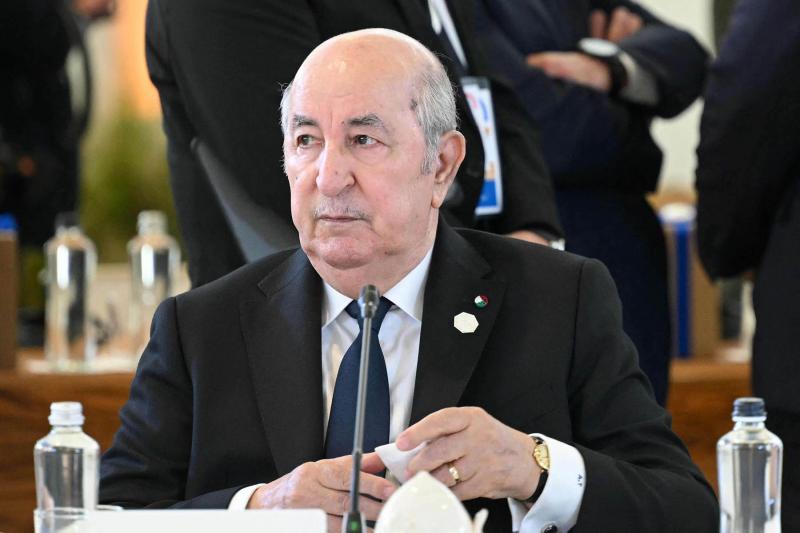Algeria Targets Growth As Fiscal Risks Persist
Algeria projects 4.1% growth with a 12.4% deficit; Brent (BZ=F), reserves, and EMB will signal whether execution compresses spreads or DZD=X faces pressure as capital outlays rise and non-oil growth targets meet procurement and financing constraints.

Algeria’s draft 2026 Finance Bill projects real GDP growth of 4.1%, signaling a policy-led expansion that prioritizes demand support while the hydrocarbon cycle softens. Authorities frame the forecast around a conservative oil anchor—Brent (BZ=F) at $60 per barrel—paired with a still-large overall deficit near 12.4% of GDP and elevated capital outlays. Inflation is expected to hover near the mid-single digits as imported food and energy pass-through moderates, while foreign reserves remain sufficient at roughly a year-plus of import cover. The policy bet is explicit: sustained public spending, tax incentives for private investment, and better execution in non-hydrocarbon sectors will lift value added fast enough to offset external volatility, without destabilizing the dinar (DZD=X) or crowding out private credit.
Mechanically, the growth arithmetic rests on three conduits. First, capital expenditure—equivalent to roughly 12–13% of GDP—must translate into higher capacity utilization in construction materials, transport, and energy services within four to six quarters, raising non-oil activity toward 4.5% in 2026. Second, the fiscal multiplier must be preserved by tightening procurement and local-content rules so that stimulus does not leak into imports and widen the current account deficit. Third, financing conditions must remain orderly: if domestic borrowing accelerates or monetization rises, term premia will steepen, bank balance sheets will absorb more sovereign risk, and real activity will face a crowding-out headwind. The central bank’s room to tighten policy rates is limited but non-zero; a modest increase would cap inflation expectations if liquidity drifts looser during peak issuance.
The bill embeds a binary external scenario. If hydrocarbons surprise to the upside—Brent averages $70–75 with stable gas volumes—revenue outturns will outperform the baseline by several points of GDP, allowing deficit compression without cutting capital programs. If prices underperform—sustained Brent below $55 or weaker volumes—the revenue gap forces either spending rationalization, higher domestic funding needs, or reserve drawdowns. With the current account already narrowing on softer hydrocarbon receipts and strong capital-goods imports, reserves provide time but not immunity; persistent twin deficits would eventually require import compression, slower execution of projects, or exchange-rate flexibility to protect real balances.
Sectorally, non-hydrocarbon supply remains the hinge for credibility. Industrial segments such as cement, fertilizers, and downstream petrochemicals have posted mid- to high-single-digit growth since 2022 but still represent a modest share of export receipts. The service economy, roughly 40–45% of GDP, is largely domestically oriented with limited tradability. Absent reforms that broaden FX access, harden budget constraints in state-owned banks, and strengthen contract enforcement, the state-spending impulse risks generating cyclical lifts rather than productivity gains. Employment gains will materialize in construction and public works, yet durability depends on whether private capex follows public capex or waits for clearer payment cycles and price signals.
Markets will price the policy-through-cycle rather than the point forecast. The global risk tone—proxied by EMB—will set beta for emerging sovereigns, but Algeria’s idiosyncratic premium will track three variables: delivery on non-oil growth, consistency between budget execution and cash generation, and reserve dynamics under the oil anchor. A favorable energy tape—BZ=F above the $60 fiscal anchor and firm gas benchmarks (NG=F)—would compress spreads; slippage in execution, rising arrears, or reserve erosion would widen them. Domestically, heavier Treasury issuance could lift long-end yields and tighten private liquidity, partly offsetting stimulus via the crowding-out channel. The policy challenge is to keep fiscal traction positive while preventing a deterioration in the credit mix on bank balance sheets.
The forward test is measurable and time-anchored. By year-end 2026, three indicators will adjudicate the forecast: non-hydrocarbon GDP growth at or above 4.5%; execution of at least 90% of budgeted capital outlays with a higher local-content share; and material deficit compression toward single digits of GDP without depleting reserves. If these metrics land, Algeria will have converted countercyclical spending into a credible diversification bridge, compressing risk premia and easing the funding path into 2027.
If they miss—especially alongside weaker hydrocarbons—the result will be wider spreads, firmer policy rates, and a forced consolidation cycle that trades near-term growth for balance-sheet stability. The Finance Bill thus functions as a market test of whether fiscal expansion can translate into productivity and institutional credibility within a verification horizon investors can price.





